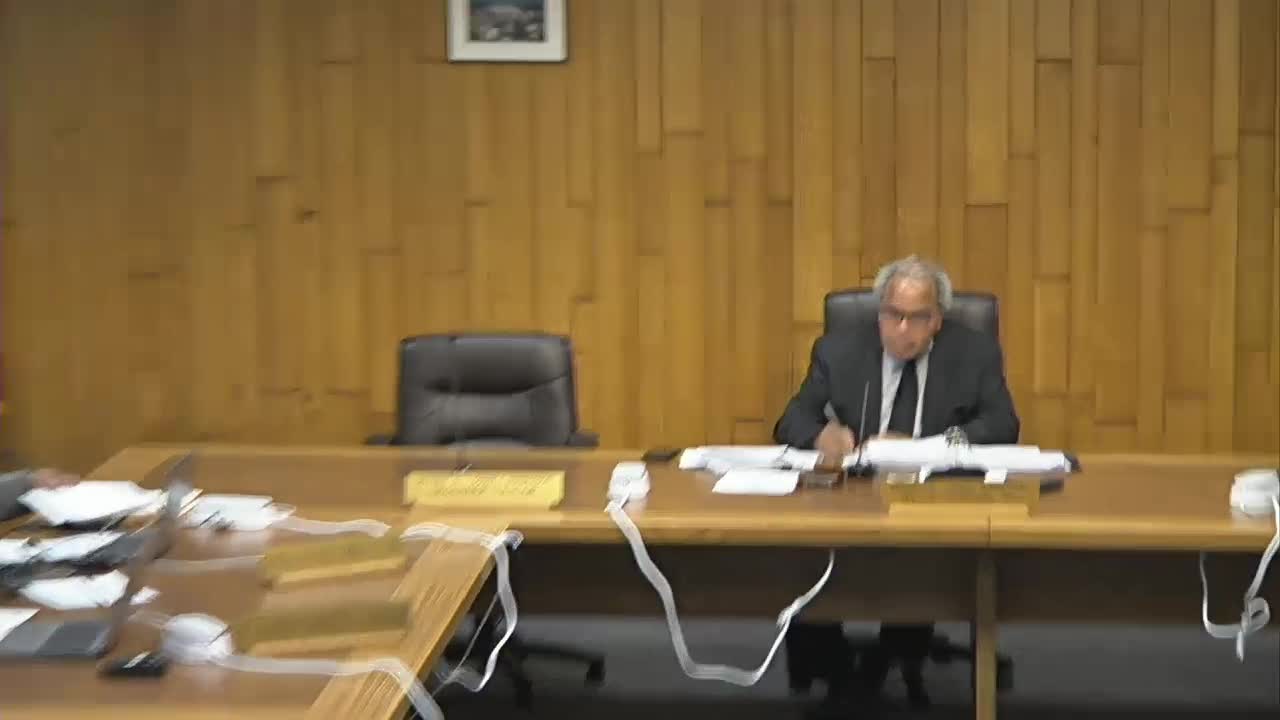Office of Emergency Management reports flood response, siren upgrades and seeks outreach coordinator funding
October 14, 2025 | Milwaukee County, Wisconsin
This article was created by AI summarizing key points discussed. AI makes mistakes, so for full details and context, please refer to the video of the full meeting. Please report any errors so we can fix them. Report an error »

The Office of Emergency Management (OEM) told the Finance Committee about its recent incident-response work, operational programs and budget posture for 2026, including an account of the county�s August flooding response and ongoing recovery coordination.
Why it matters: OEM supports county-wide emergency response and continuity for 911, radio systems, EMS partnerships and planning; its funding and staffing affect disaster preparedness, response and recovery capabilities.
Director Cassandra Liebel and deputy director Chris McGowan summarized OEM�s divisions: emergency management, 911 communications, radio services, and emergency medical services (EMS). Liebel said the OEM helped coordinate the county EOC during the August flooding, managed data and mapping to direct resources to vulnerable populations, and is working with Wisconsin Emergency Management and FEMA on damage assessments and recovery. She noted anticipated operational costs tied to the planned Forensic Science Center move and the need to ensure continuity for 911 and radio services.
911 and radio operations: Kenyatta Patterson, 911 division director, said call-answer targets have been maintained (calls answered within 10 seconds, exceeding national standards) and that the 911 center handled thousands of trauma pages to hospitals; 911 will add emergency medical dispatch services for airport fire dispatch next year. Theresa Bridal, radio services director, said the county�s hosted radio core migration completed and radio-site support aided flood-assessment teams; radio expenses included unexpected site repairs after lightning damage.
EMS programs and whole-blood field use: Dan Pohjar, EMS division director, described expansion of a prehospital whole-blood program now on 10 units with an 11th coming online and national awards for cardiovascular-care programs; he also described efforts to centralize electronic patient-care records and pursue health-information exchanges with hospitals to improve outcome measurement.
Budget and requests: OEM said most of its 2026 budget is stable but departments requested a supplemental outreach coordinator position (estimated annual cost approximately $85,000 including fringe) to focus on equity-driven preparedness and recovery outreach; OEM said the requested position did not make the recommended budget. OEM staff noted potential federal-state funding sources but said some grant availability and timing remained uncertain.
Ending: OEM said it will continue recovery coordination for the flood response and asked for consideration of the outreach coordinator position to improve targeted preparedness and recovery work; the committee asked for follow-up on grant timelines and the supplemental request.
Why it matters: OEM supports county-wide emergency response and continuity for 911, radio systems, EMS partnerships and planning; its funding and staffing affect disaster preparedness, response and recovery capabilities.
Director Cassandra Liebel and deputy director Chris McGowan summarized OEM�s divisions: emergency management, 911 communications, radio services, and emergency medical services (EMS). Liebel said the OEM helped coordinate the county EOC during the August flooding, managed data and mapping to direct resources to vulnerable populations, and is working with Wisconsin Emergency Management and FEMA on damage assessments and recovery. She noted anticipated operational costs tied to the planned Forensic Science Center move and the need to ensure continuity for 911 and radio services.
911 and radio operations: Kenyatta Patterson, 911 division director, said call-answer targets have been maintained (calls answered within 10 seconds, exceeding national standards) and that the 911 center handled thousands of trauma pages to hospitals; 911 will add emergency medical dispatch services for airport fire dispatch next year. Theresa Bridal, radio services director, said the county�s hosted radio core migration completed and radio-site support aided flood-assessment teams; radio expenses included unexpected site repairs after lightning damage.
EMS programs and whole-blood field use: Dan Pohjar, EMS division director, described expansion of a prehospital whole-blood program now on 10 units with an 11th coming online and national awards for cardiovascular-care programs; he also described efforts to centralize electronic patient-care records and pursue health-information exchanges with hospitals to improve outcome measurement.
Budget and requests: OEM said most of its 2026 budget is stable but departments requested a supplemental outreach coordinator position (estimated annual cost approximately $85,000 including fringe) to focus on equity-driven preparedness and recovery outreach; OEM said the requested position did not make the recommended budget. OEM staff noted potential federal-state funding sources but said some grant availability and timing remained uncertain.
Ending: OEM said it will continue recovery coordination for the flood response and asked for consideration of the outreach coordinator position to improve targeted preparedness and recovery work; the committee asked for follow-up on grant timelines and the supplemental request.
Don't Miss a Word: See the Full Meeting!
Go beyond summaries. Unlock every video, transcript, and key insight with a Founder Membership.
✓
Get instant access to full meeting videos
✓
Search and clip any phrase from complete transcripts
✓
Receive AI-powered summaries & custom alerts
✓
Enjoy lifetime, unrestricted access to government data
30-day money-back guarantee

